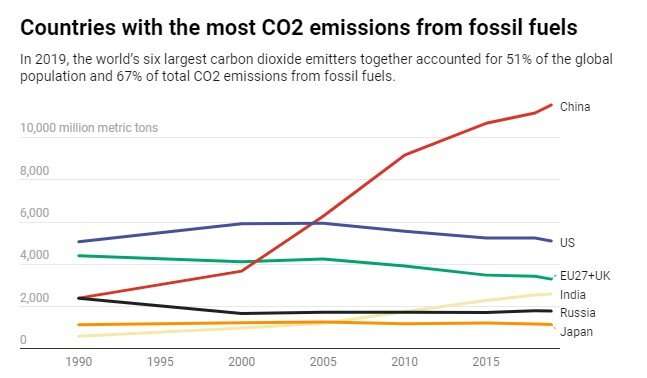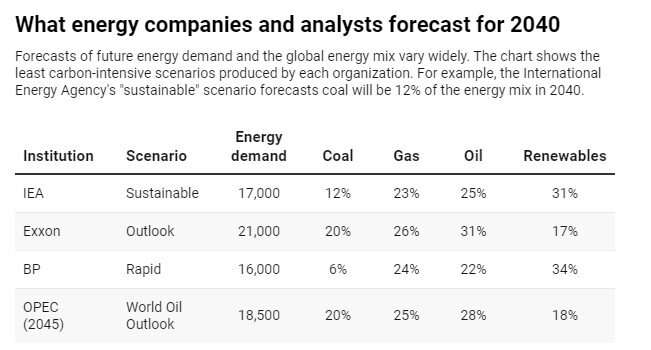Hydrogen is one future fuel oil execs and environmentalists could both support

Tehran, 1943: —hosted by the young Shah Reza Pahlavi—agree on plans for the two-front attack on Hitler while sketching out the east-west division of Europe. Holding the meeting in Iran, with separate consultations with the shah, was no mistake. Gulf oil was a critical resource to the Allied war effort. Oil has flowed under the surface of political conflicts ever since.
Fast-forward to today, and political antagonists and energy players are again forging a messy path forward, this time focused on long-term energy transitions as disparate countries try to slow and eventually stop climate change.
The 2015 was a groundbreaking diplomatic effort—196 countries committed to prevent average temperatures from rising by more than 2 C (3.6 F), with an aim of less than 1.5 C (2.7 F). To meet that goal, scientists argue that will have to reach .
The genius of the Paris climate accord was getting all the major parties to agree—particularly major greenhouse gas emitters including Russia, China, India, Brazil and members of , the Organization of the Petroleum Exporting Countries.
Now, the challenge is implementing the multiplicity of solutions needed to bend the global warming curve. The Paris Agreement is not a treaty—countries set their own targets and determine their own strategies for meeting them. Each signatory has its own politics, economic structure, energy resources and climate exposure.
The commitments from countries are as President Joe Biden hosts a virtual climate summit with international leaders on Earth Day, April 22, 2021, and with Russia, China and other countries to develop implementable solutions.
As an , I am familiar with countries' evolving responses to climate change and companies' shifting investments and different visions of the future. One technology attracting attention from groups on all sides is hydrogen.
Different visions of energy's future
As the world's population and economies grow, energy demand is expected to over the next 30 years, so making the right long-term investments is crucial.

Energy companies and policymakers have widely different visions of that future. Their long-term scenarios show that most expect fossil fuel demand to remain steady for decades and possibly decline. However, many are also their technologies.
The International Energy Agency—which countries often look to for future scenarios, but which has a history of underestimating demand and clean energy— will meet about one-third of the global energy demand by 2040 in its most optimistic scenario. That would be in a world with higher carbon taxes and more wind power, solar power, electric vehicles, carbon capture and storage. Greener technologies may come close to keeping warming under 2 C, but not quite.
Exxon, on the other hand, forecasts a , with slower transitions to electric vehicles, steady demand for oil and gas, and a warmer world. Exxon is also investing in carbon capture and storage and hydrogen, but it believes oil and gas will provide in 2040 and renewable energy will be less than one-fifth.
OPEC, whose members are among the most exposed to climate change and dependent upon oil and gas, also sees oil and gas dominating in the future. Nonetheless, several Gulf nations are also investing heavily in alternative technologies—including nuclear, solar, wind and hydrogen—and trying to transition away from oil.
BP proposes a more focused shift toward cleaner energy. Its "" forecasts flat energy demand and a more dramatic swing to renewables combined with a growing hydrogen economy. its own renewable energy to go from 2.5 gigawatts in 2019 to 50 GW by 2030, and its oil production to fall by 40%.
Others are also exploring hydrogen's potential. Much as with utilities' shift from coal to natural gas, hydrogen may ease the transition to cleaner energy with enough investment.
Since this fuel is getting so much industry attention, let's look more closely at its potential.
How realistic is hydrogen as a climate solution?
Hydrogen to fuel cars, buses and airplanes, heat buildings and serve as a base energy source to balance wind and solar power in our grids. for hard-coal coke in making steel. It also offers energy companies a future market using processes they know. It can be liquefied, stored, and transported through existing pipelines and LNG ships, with some modifications.
So far, however, hydrogen is as a clean-energy solution. First, it requires a upfront investment—including carbon capture capacity, pipeline modifications, industrial boilers for heat rather than gas, and fuel cells for transportation—plus policies that support the transition.
Second, for hydrogen to be "green," the electricity grid has to have zero emissions.
Most of today's hydrogen is and is known as "gray hydrogen." It is produced using high-temperature steam to split hydrogen from carbon atoms into methane. Unless the separated carbon dioxide is stored or used, gray hydrogen results in the same amount of climate-warming CO2 as natural gas.
"Blue hydrogen" uses the same process but captures the carbon dioxide and stores it so only of the CO2 is released into the atmosphere. "Green hydrogen" is produced using renewable electricity and , but it is twice as expensive as blue and dependent on the cost of electricity and available water.
Many electric utilities and energy companies, including , and , are actively exploring a transition to a hydrogen-mixed economy, with a focus on blue hydrogen as an interim step. Europe, with its dependence on imported natural gas and higher electricity costs, is that will incorporate a mix of coupled with wind, solar, nuclear and an integrated energy grid.
China, the world's largest energy user and greenhouse gas emitter, is instead investing heavily in natural gas—which has of coal—along with carbon capture and storage and a growing mix of solar and wind power. Russia, the second-largest natural gas producer after the U.S., is expanding its gas production and exports to Asia. Some of that gas may end up as blue hydrogen.
Ramping up blue and green hydrogen as clean-energy solutions will require substantial investments and long-term modifications to energy infrastructure. In my view, it is not the magic bullet, but it may be an important step.
Finding solutions amid messy politics
Of course, technology investments cannot assume away the messy politics of the world. People and leaders around the globe still have of the climate crisis and need for greener energy investments.
Perhaps the leaders gathered will find some common ground as and . What is critical for meeting the Paris goals is that countries invest now in a cleaner future.
Provided by The Conversation
This article is republished from under a Creative Commons license. Read the .![]()















